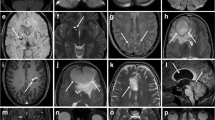Abstract
Objective
To determine the diagnostic accuracy of an algorithm structured in four clinical scenarios to discriminate benign primary headaches from serious secondary non-traumatic headaches (NTH) in the emergency department (ED).
Background
NTH is usually a benign symptom but can occasionally result in serious outcome making the disposition of patients with NTH difficult in the ED.
Design and methods
Consecutive adults patients referring to 8 EDs of the Emilia-Romagna region in Italy for NTH as the chief complaint were recruited in the study for a 30-day period. ED physicians attributed to each patient one of the four clinical scenarios (1, 2 and 3 identifying serious secondary headaches and scenario 4 identifying benign primary headaches) or an undetermined scenario when none of the four scenarios applied. Reference standards of the study were the head CT scan and a follow-up telephone interview after three months by the ED admission.
Results
The test was administered to 256 out of 302 (85 %) eligible patients. The analysis (scenario 1,2,3 vs scenario 4) was based on 180 patients who completed the follow-up showing a sensitivity of 100 % (95 % confidence interval, 81 % to 100 %) and a specificity of 64 % (56 % to 71 %). The likelihood ratio for a positive test was 2.67 (2.15 to 3.31) and the likelihood ratio for a negative test was 0.04 (0.003 to 0.64).
Conclusions
An algorithm based on four clinical scenarios can be administered to the majority of patients presenting to the ED with the chief complaint of NTH. The algorithm showed a good accuracy in identifying patients with non-life threatening causes of headache and could be used as a risk stratification tool to improve clinical decision- making. Further studies are required to validate this diagnostic algorithm.
Similar content being viewed by others
References
Locker T, Mason S, Rigby A (2004) Headache management-Are we doing enough? An observational study of patients presenting with headache to the emergency department. Emerg Med J 21:327–332
Morgenstern LB, Huber JC, Luna- Gonzales H, Saldin KR, Grotta JC, Shaw SG, Knudson L, Frankowski RF (2001) Headache in the Emergency Department. Headache 41:537–541
Stevenson RJ, Dutta D, MacWalter RS (1998) The management of acute headache in adults in an acute admissions unit. Scott Med J 43:173–176
Ramirez-Lassepas M, Espinosa CE, Cicero JJ, Johnston Kl, Cipolle RJ, Barber DL (1997) Predictors of intracranial pathologic findings in patients who seek emergency care because of headache. Arch Neurol 54:1506–1509
Vermeulen MJ, Schull MJ (2007) Missed diagnosis of subarachnoid haemorrhage in the Emergency Department. Stroke 38:1216–1221
Cortelli P, Cevoli S, Nonino F, Baronciani D, Magrini N, Re G, De Berti G, Manzoni GC, Querzani P, Vandelli A (2004) Evidence-based diagnosis of nontraumatic headache in the emergency department: a consensus statement on four clinical scenarios. Headache 44:587–595
Knottnerus JA, Weel C, Muris JWM (2002) Evaluation of diagnostic procedures. BMJ 324:477–480
Edlow JA, Caplan LR (2000) Avoiding pitfalls in the diagnosis of subarachnoid haemorrhage. N Engl J Med 342:29–36
Beck J, Raabe A, Szelenyi A, Berkefeld J, Gerlach R, Setzer M, Seifert V (2006) Sentinel headache and the risk of rebleeding after aneurismal subarachnoid haemorrhage. Stroke 37:2733–2737
Bossuyt PM, Reitsma JB, Bruns DE, eGatsonis CA, Glasziou PP, Irwig LM, Lijmer JG, Moher D, Rennie D, de Vet HCW (2003) Towards complete and accurate reporting of studies of diagnostic accuracy: the STARD initiative. BMJ 326:41–44
Locker TE, Thompson C, Rylance J, Mason SM (2006) The utility of clinical features in patients presenting with non-traumatic headache: an investigation of adult patients attending an emergency department. Headache 46:954–961
American College of Emergency Physicians (2002) Clinical policy: critical issues in the evaluation and management of patients presenting to emergency department with acute headache. Ann Emerg Med 39:108–122
Detsky ME, McDonald DR, Baerlocher MD, Tomlinson GA, McCrory DC, Booth CM (2006) Does this patient with headache have migraine or need neuroimaging? JAMA 296:1274–1283
Friedman BW, Hochberg ML, Esses D, Grosberg B, Corbo J, Toosi B, Meyer R, Bijur PE, Lipton RB, Gallagher EJ (2007) Applying the International Classification of Headache Disorders to the Emergency Department: an assessment of reproducibility and the frequency with which a unique diagnosis can be assigned to every acute headache presentation. Ann Emerg Med 49:409–419
Newman LC, Lipton RB (1998) Emergency department evaluation of headache. Neurol Clin 16:285–303
Ward TN, Levin M, Phillips JM (2001) Evaluation and management of headache in the emergency department. Med Clin North Am 85:971–985
Author information
Authors and Affiliations
Corresponding author
Additional information
On behalf of the Multidisciplinary Group for Non-Traumatic Headache in Emergency Department:
Bologna Maggiore (Massimo Annicchiarico, Tommaso Sacquegna), Bologna S.
Orsola (Giuseppe Rè, Rita Rinaldi),
Forlì (Alberto Vandelli, Walter Neri),
Lugo (Mario Ravaglia, Piero De Carolis),
Imola (Tiziano Lenzi, Vittoria Mussuto),
Modena Policlinico (Pietro Martella, Jessica Mandrioli),
Modena Estense (Mario Cavalli, Francesco Nonino),
Parma (Mario Cavazza, Gian Camillo Manzoni),
Piacenza (Cristina Maestri, Fabiola Magnifico),
Ravenna (Maria Pazzaglia, Pietro Querzani),
Reggio Emilia (Anna Maria Ferrari, Giovanni Ferrarini)
Rights and permissions
About this article
Cite this article
Grimaldi, D., Nonino, F., Cevoli, S. et al. Risk stratification of non-traumatic headache in the emergency department. J Neurol 256, 51–57 (2009). https://doi.org/10.1007/s00415-009-0033-0
Received:
Revised:
Accepted:
Published:
Issue Date:
DOI: https://doi.org/10.1007/s00415-009-0033-0




